10 Types of Seabirds: An Overview (with Pictures)
Last Updated on
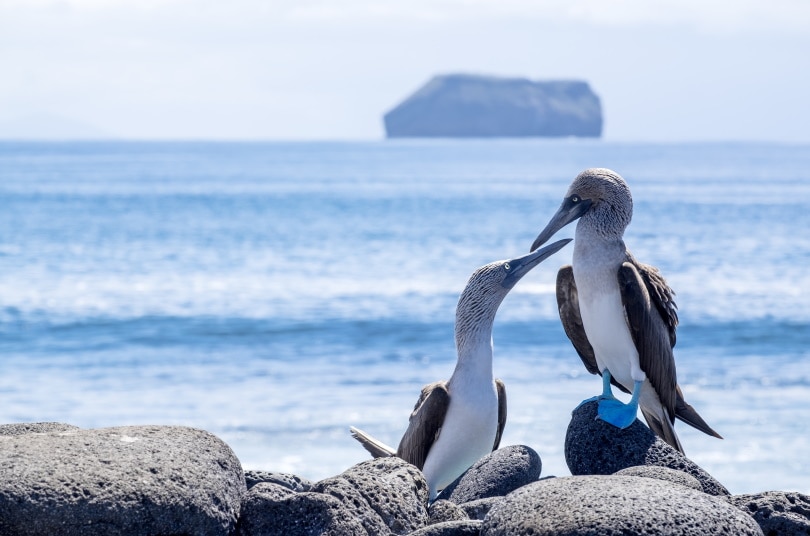
There are many species of birds out there. However, there are only a few different types of seabirds. Seabirds actually make up only about 3% of the world’s bird species, which makes them pretty rare. They are not as varied as some other types of birds.
While these birds are more numerous in the colder waters, they are more diverse in warmer waters. In other words, very prolific species live in the colder regions, but more numbers of species live in the warmer regions.
Usually, these birds feed on smaller organisms, including small fish. Some even feed exclusively on zooplankton.
We’ll take a look at 10 types of seabirds below.

The 10 Most Common Types of Seabird
1. Albatross
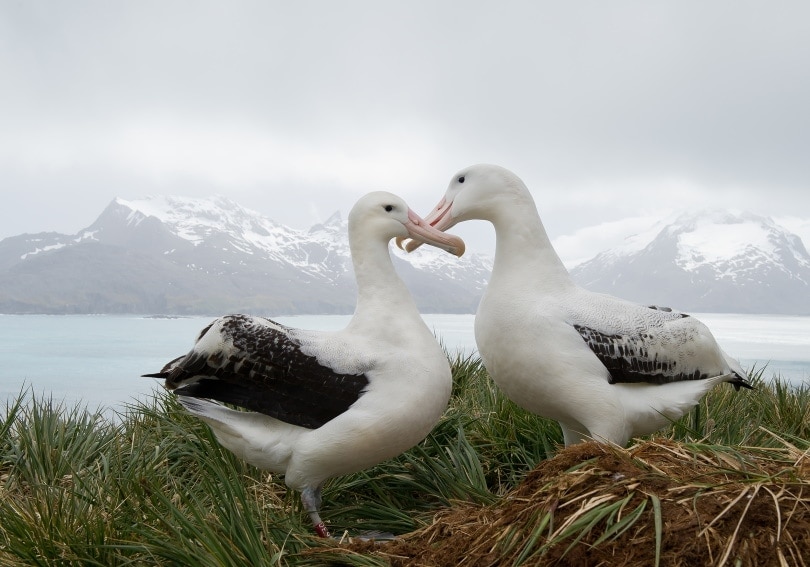
| Length: | 6–11 feet |
| Weight: | 13–28 pounds |
| Number of Species: | 21 |
The Albatrosses are extremely large birds. Their wingspan can reach up to 11 feet in some species. In fact, they are some of the largest flying birds in the world. However, they need this bulk to survive the colder climates that they are accustomed to. They also have to use their huge wings to fly thousands of miles—sometimes on a single journey.
These birds are wide-ranging and known throughout the world. They are sometimes considered good luck by sailors.
2. Auk
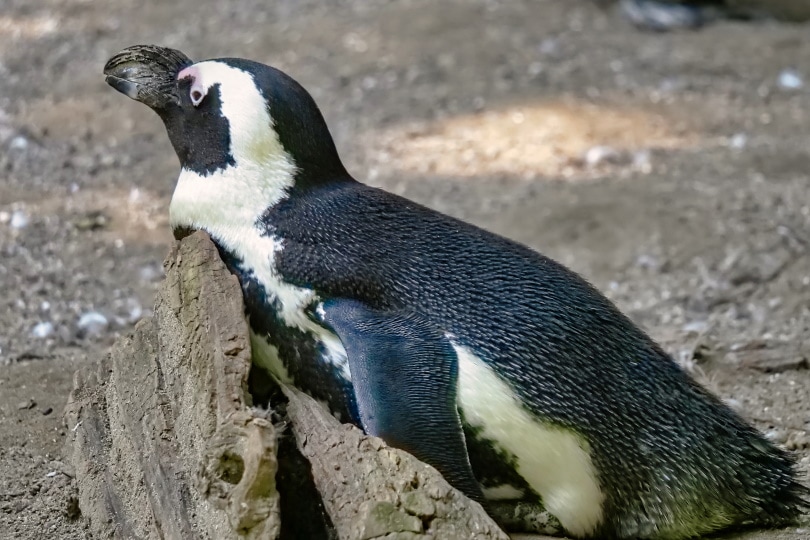
| Length: | 6–18 inches |
| Weight: | 3 ounces to 2.2 pounds |
| Number of Species: | 24 |
Auks are much smaller than Albatrosses. However, they still like their life around the sea. They are extremely compact and weigh more than they look(though some species don’t weigh much at all). They live in colder waters, where their compact body helps them stay warm.
These birds typically fly just about anywhere. Unlike other birds, they are not great at walking and can be quite clumsy. They have a very upright posture and are usually seen flying.
Most species have black and white feathers. However, some do have colorful markings or bills that set them apart. Out of all the types of seabirds, the Auks do not seem to vary much.
3. Booby

| Length: | 4–5 feet |
| Weight: | 2–4 pounds |
| Number of Species: | 10 |
Even if you’ve never seen a Booby, you have probably heard of one. They are named for their silly facial expressions. They are actually quite friendly to people in many cases, especially sailors. Their history of funny behaviors is why they have won such a funny name.
These topical birds usually have some bright markings. For instance, the Blue-Footed Booby has bright blue feet. While blue is a common color for these bright markings, some species have markings of other colors. You can usually tell different species apart pretty easily.
These large birds are quite awkward and aren’t about to win any flying contests. However, they are great at diving, which is how they catch the majority of their food.
4. Frigatebird
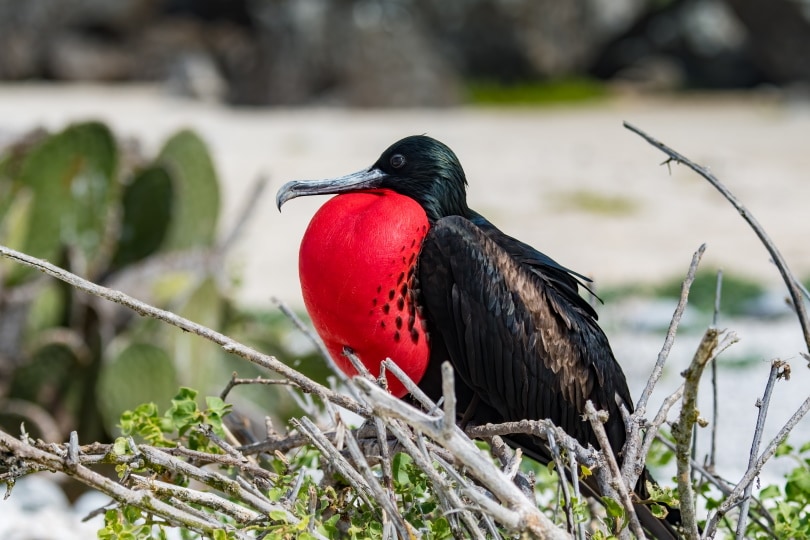
| Length: | 5–8 feet |
| Weight: | 2–4 pounds |
| Number of Species: | 5 |
Frigatebirds have very long, hooked bills. Their wings are sharply pointed, which sets them apart from other birds. Most males have a red throat, making them easy to sex as well.
Usually, you’ll spot these birds flying extremely high. They usually make large, elegant circles and spend much of their time stealing fish from other birds. For this reason, they are also known as pirate birds.
5. Gulls and Terns
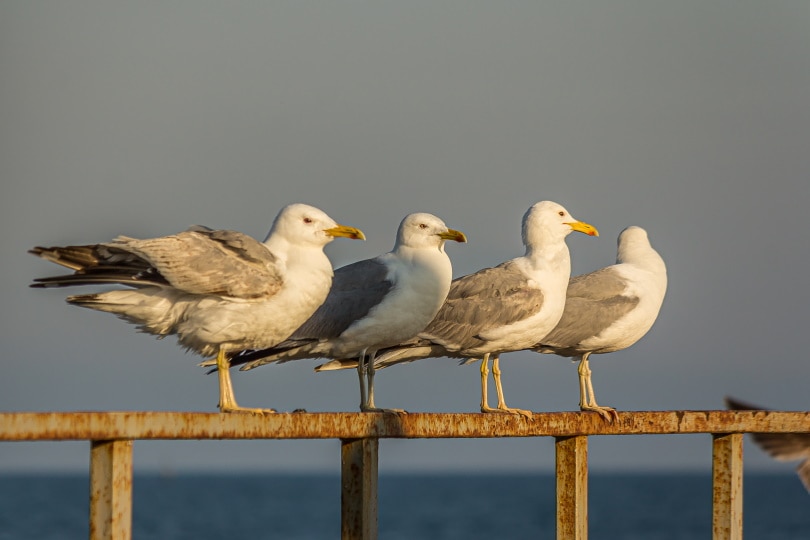
| Length: | Varies widely |
| Weight: | Varies widely |
| Number of Species: | 68 |
When most people think of seabirds, they imagine the gull. These birds are extremely prolific and common, living in tropical areas as well as cooler areas. They are closely related to the terns, who we have grouped them in with here. While these species are slightly different from one another, they are close enough to talk about together.
Gulls range from very small to very large. Some are pounds and quite heavy, while others only weigh a few ounces. There are nearly 68 different species of gulls out there, and they all vary quite a bit.
6. Pelicans

| Length: | 4.1–4.3 feet |
| Weight: | 8.6–15.4 pounds |
| Number of Species: | 1 |
Pelicans are very distinguished birds. They are large and grow to be quite heavy. While there are about eight species of Pelican, only one is mostly marine. The others are somewhat marine, but spend much of their time on land as well.
These birds mostly eat fish, as you’d imagine. They are characterized by their large throat pouch, which allows them to drink water and catch prey. They usually have pale plumage, though some do differ in color. In the mating season, the flesh on the birds’ faces becomes brightly colored.
7. Penguins
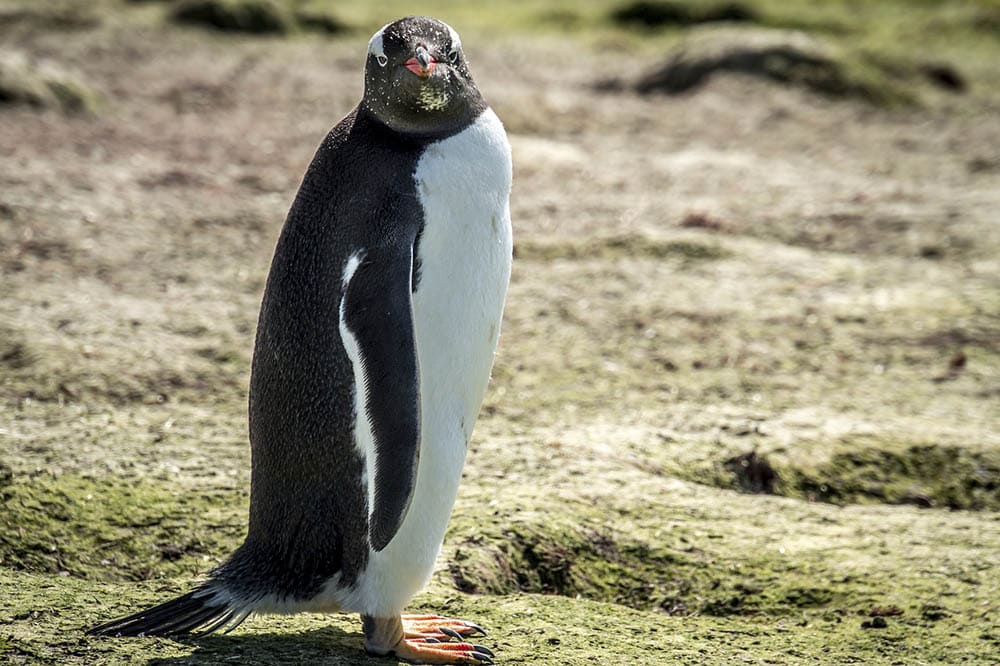
| Length: | 15 inches to 3.5 feet |
| Weight: | 2–88 pounds |
| Number of Species: | 18 |
Pretty much everyone knows what a penguin is, though very few people have seen them in their natural habitat. These flightless birds spend much of their life on land or swimming. They are specialized for hunting in frigid waters thanks to their insulating fat and plumage. They are absolutely one of the most unique species of birds out there.
These birds aren’t that graceful on land, but they are great swimmers.
While they’re found mostly in colder regions, there are some small penguins in tropical areas. They also vary widely in size and coloration.
8. Petrels
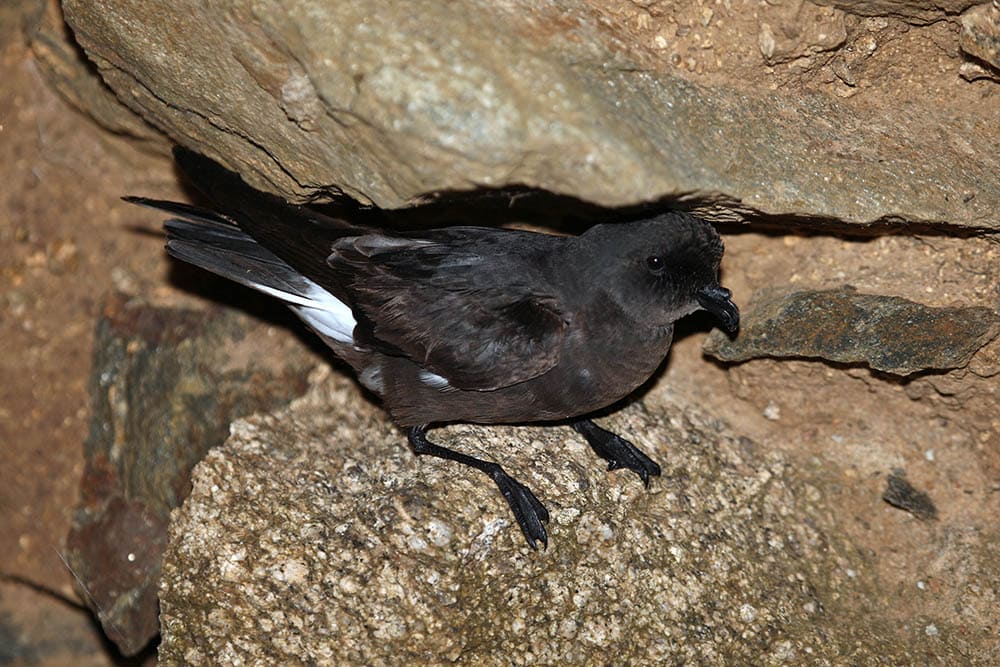
| Length: | 31–37 inches |
| Weight: | 6–11 pounds |
| Number of Species: | 96 |
Petrels are an extremely diverse type of bird, with 96 different distinct species. They are usually seen skinning the waves and flying extremely low. In some cases, they stay so close that they actually look like they’re walking on the surface.
As purely seabirds, Petrels spend much of their time at sea. They only return to land to breed.
9. Skuas

| Length: | 22–48 inches |
| Weight: | 0.6–3.6 pounds |
| Number of Species: | 4 |
Skuas spend much of their life at sea. They primarily eat the eggs and chicks of other seabirds, making them predatory in nature. Despite this, some species don’t get very large in the least. In fact, the smallest species doesn’t even weigh a pound.
These birds nest in temperate and arctic regions. They also perform long-distance migration, with some birds making it as far as the South Pole.
10. Tropicbirds

| Length: | 29–40 inches |
| Weight: | 10–25 ounces |
| Number of Species: | 3 |
These relatively small birds have almost completely white plumage. They usually have very long streaming tail feathers, as well as relatively short legs. They typically plunge into the water to catch fish, but they do not dive very deep.
There are only three members of this family, so they are relatively less varied than other species.

In Conclusion
We’ve discussed the 10 types of seabirds above. However, the exact categories will differ depending on who you ask. Some people put Puffins in their own category, even though they are technically an Auk. Therefore, you may find other sources with fewer or more species.
Gulls vary in exactly how they are categorized. Sometimes, they are lumped in with other species. It all depends on who you talk to.
With that said, no matter how you divide them, all of these birds spend much of their life near the waves and water. Some of them prefer temperature areas, while others prefer arctic areas. It really doesn’t matter how you divide them. It doesn’t change their appearance or characteristics.
Featured Image Credit: Chiyacat, Shutterstock
About the Author Kristin Hitchcock
Kristin is passionate about helping animal lovers by informing them on the latest scientific research and understandings. She currently resides in Tennessee with four dogs, three cats, two fish, and a lizard, though she has dreams of owning chickens one day!
Related Articles:
Monocular vs Telescope: Differences Explained (With Pictures)
10 Types of Hummingbirds in Arkansas (With Pictures)
8 Types of Hummingbirds in Nebraska (With Pictures)
5 Types of Hummingbirds in Idaho (With Pictures)
3 Types of Hummingbirds in Mississippi (With Pictures)
8 Types of Hummingbirds in Kansas (With Pictures)
5 Types of Hummingbirds in West Virginia (With Pictures)
5 Types of Hummingbirds in Ohio (With Pictures)
